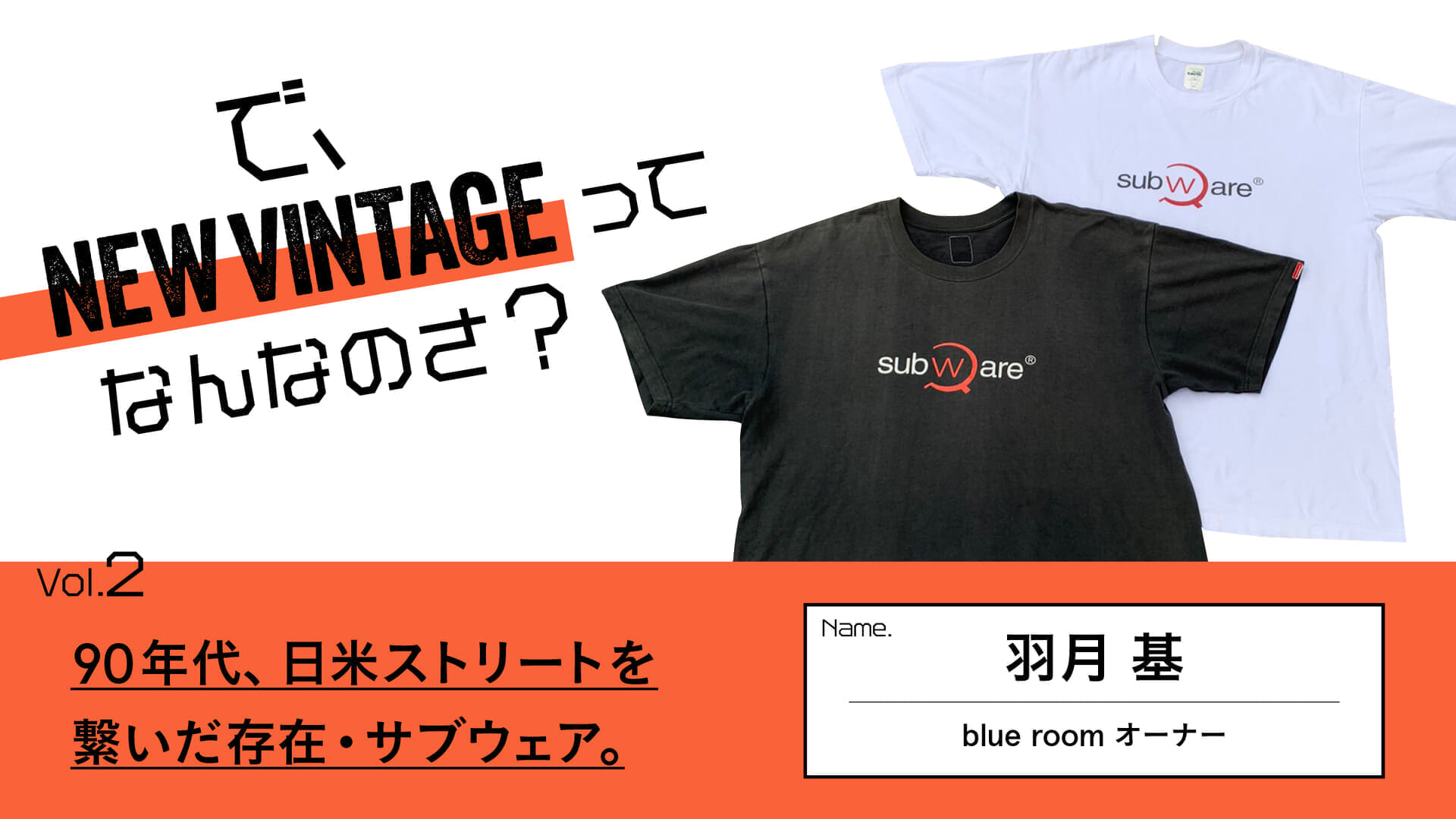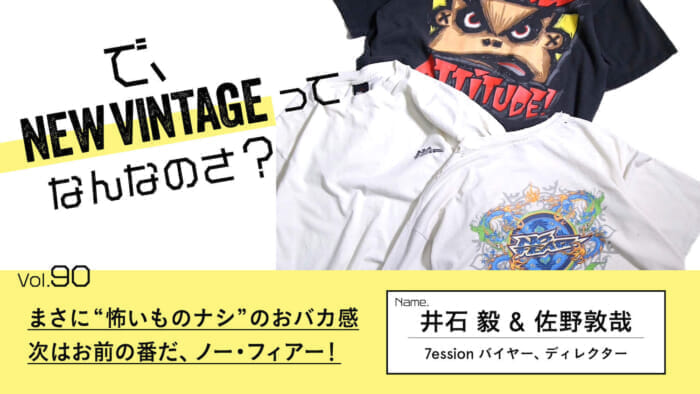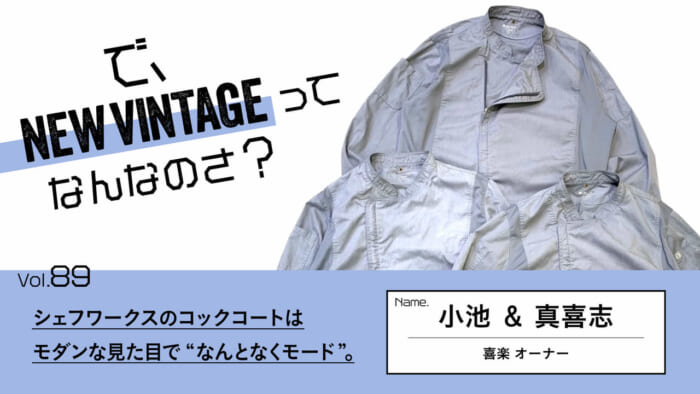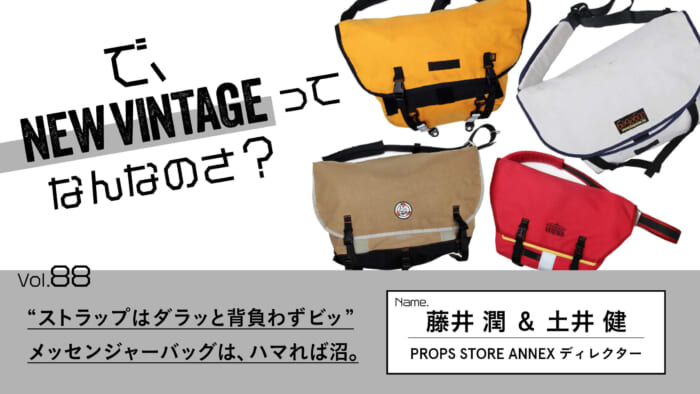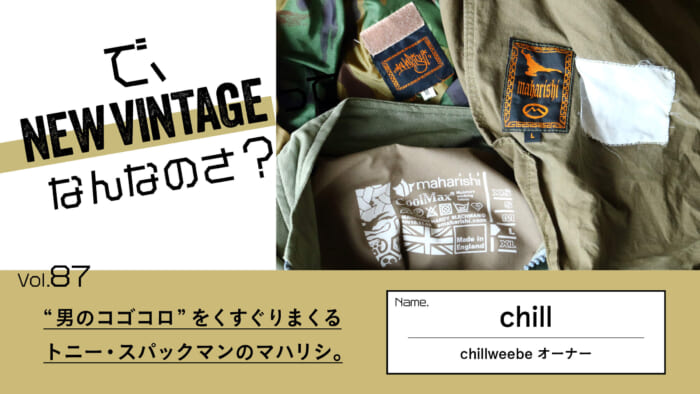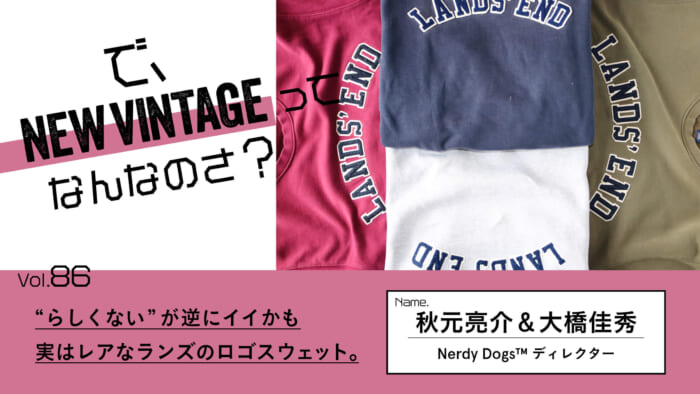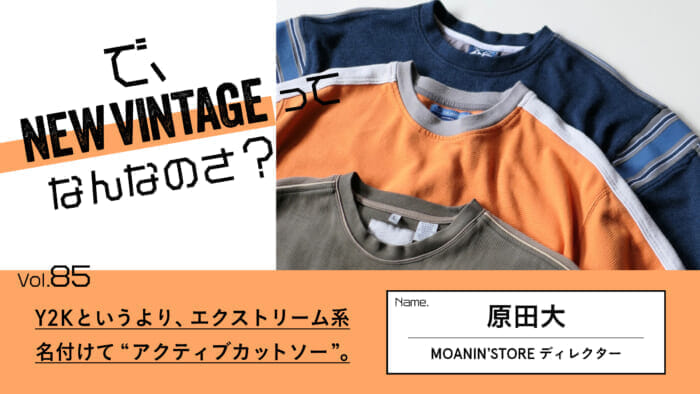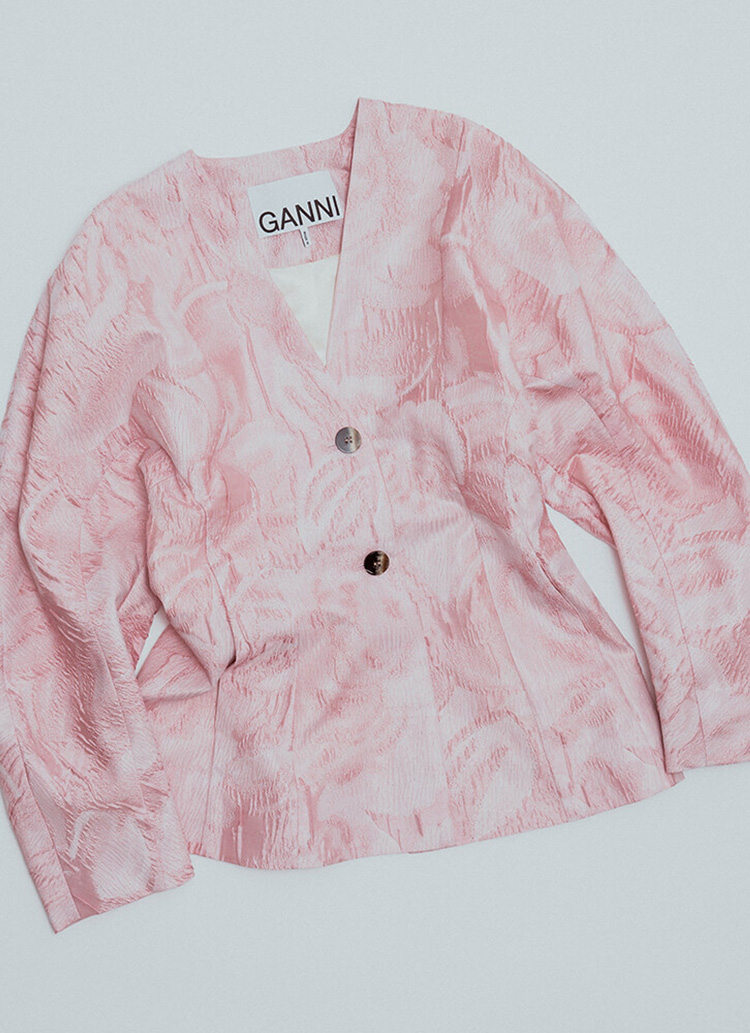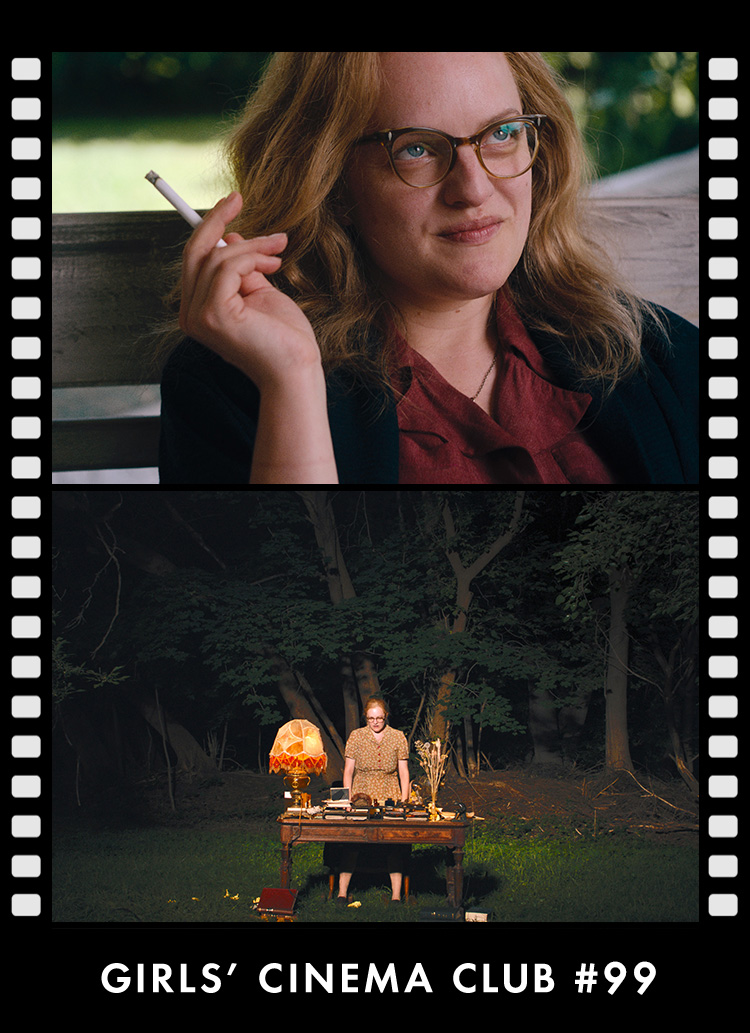What is the New Vintage anyway?
In the 1990s, the term "vintage" was used to describe vintage clothing that did not meet the definition of "antique," but still had value, as opposed to "antique" clothing that was 100 years old. Nowadays, there is a movement to find new value in "new vintage," even in old clothes from the 1980s onward, which used to be called "regular" vintage clothes. In this project, four vintage clothing stores with different styles propose new ways to enjoy vintage clothing. Each of them will talk about the charm of vintage clothing with their own sense of style.
The second installment is by Motoi Hazuki of blue room.
Text_Tommy
Edit_Yosuke Ishii
Motoi Hazuki / blue room owner
Vol.2_Subware
-What does "Blue Room" think of the New Vintage?
Just as vintage clothing from the 70s and earlier was called "vintage" in the 90s, items born in the 90s are considered "vintage" by those of us who were born in the same era. For those of us who were born in the 90s, items born in the same era are what we call "vintage. And now that I have been invited to participate in this project, I have a renewed sense that these items may be considered "new vintage" by the older generation.
-There is certainly no small difference in generational sense.
We ourselves like vintage clothes and have seen and touched various vintage items in our own way, and we have come to think that "Champion's eye-less tag" or "Patagonia's snowless tag" is a bit different. The value of things always changes with the times, and I think it would be uninteresting if the definition of vintage clothing remains the same forever.
So you began to pay attention to vintage street brand clothing that was categorized as "Urahara-kei" in the 1990s?
I love fashion magazines from the 80's and 90's, and while reading them, I realized that there were so many cool items from that era that we didn't know about. We started "Blue Room" with the hope of teaching the younger generation like ourselves. Therefore, the street wear we sell from the 90's to the 00's is not nostalgic, but rather, it gives us a fresh surprise. Of course, in order to be considered new vintage, we believe that certain conditions must be met.
-What are the conditions?
That is "having a backbone. For example, music, extreme sports, or some other culture is linked to the clothes. Of course, the production is important, but the atmosphere of the time is also expressed in the clothes. I get excited when I see elaborate woven tags that look like they were made in the 1990s (laughs). (Laughs). The body is made of a material that is now an endangered species, and the prints are made without mercy, as if to say, "How many printing plates did you use? (Laughs). When we look at it from such a perspective, we wonder if we can feel the value of it now that we are adults. That is the definition of new vintage for us.
-I see. What items would you like to introduce on that?
I recommend "SUBWARE. I especially like the designs from the late 90's to early 00's. The designer is Stash, a legendary graffiti writer. The designer is Stash, who is known as a legendary graffiti writer. As you can see from the name of the brand, which is a coined word that combines the New York subway (where he has left his works), local subculture, and "wear," which means clothes, the brand name is a mixture of various elements of the street. For example, there are photo T-shirts of Warhol and Basquiat taken by Ricky Powell and graphics by Futura and Cowes, while there is also a collaboration with HEC-TIC and graphics by Sukeshin. In particular, these items are not just street wear, but are a work of art that captures the atmosphere of the late 90's, when Japan and New York were becoming closely connected.
I feel that this is the foundation of today's street fashion.
In the 2000s, the collaboration with Erolson Hugh of ACRONYM was involved, and the clothes became even more interesting as they evolved into more tactical and functional items. This T-shirt is a collaboration with WTAPS.
Subwear x Double Taps T-shirt ¥14,000+TAX(Blue Room)
The logo is a simple one, based on an early Taps logo T-shirt. It's also clever that the same font is used and the "W" in "Subwear" is in the Taps logo. At the time, the Supreme crew in New York wore the same T-shirt in a special issue of "Relax" featuring Supreme. When I saw that, I thought Japanese street culture was amazing.
How is it the right thing to do nowadays?
I thought it would be better to have the items be combined with items from the present day, rather than to wear them in the exact same way as cosplay of the time. I think the correct way is to wear what you think is cool. For our generation, oversized tops are tucked in, and if they are too small, they are worn in a way that suits the size of the top.
Subwear x Futura fleece jacket ¥29,000+TAX(Blue Room)
I see. The other one is a fleece jacket.
As you can guess from the tag, it is from 1996 or later. It has Futura graphics embroidered on the chest and tagging on the back. Other than that, it's just an ordinary fleece jacket, but the nice thing is that it's Polartec. The colors also match my current mood. I really like the overlap with the predecessors of Uraharajuku, as it was a time when "PROJECT DRAGON" was still in existence, and the members were all active and collaborating with each other. The relationship between Stash and Futura, two legends of graffiti art, working together is what makes this a true art piece!
-I can feel the atmosphere of the times vividly.
In the 2000s, you can find items with more obvious graphics, but I like this sense of balance that is not obvious at first glance. Also, "I wonder if the high stand collar is so that graffiti writers can easily hide their faces? or "Are the large, deep pockets and thick armholes for easy storage and control of spray cans? It is fun to imagine the reason for the design from the background.
The stories that accompany such things are what make vintage clothing so interesting, aren't they?
That's right. By digging through fashion magazines of the time, we can learn about the background of the items and the kind of people who wore them, and I think that is what makes the new vintage we deal with so interesting. I want the generation that doesn't know about it in real time to wear it with their own senses, without being bound by rules or preconceived notions. They can learn about it from there. It's definitely more fun to have such a free stance!
Motoi Hazuki / blue room owner
The staff of "blue room" is composed of people in their 20s, and the store mainly deals with street wear from the 90s to the 00s. The shop aims to "convey the passion of those days" to the younger generation, including the same generation, by offering their own interpretation of the fashion and culture of the time, which they have not experienced in real time. Currently, they only have an online store, and are preparing to re-open a store in the near future.
Official website:www.aworld.jp
Instagram:@blue_room___







